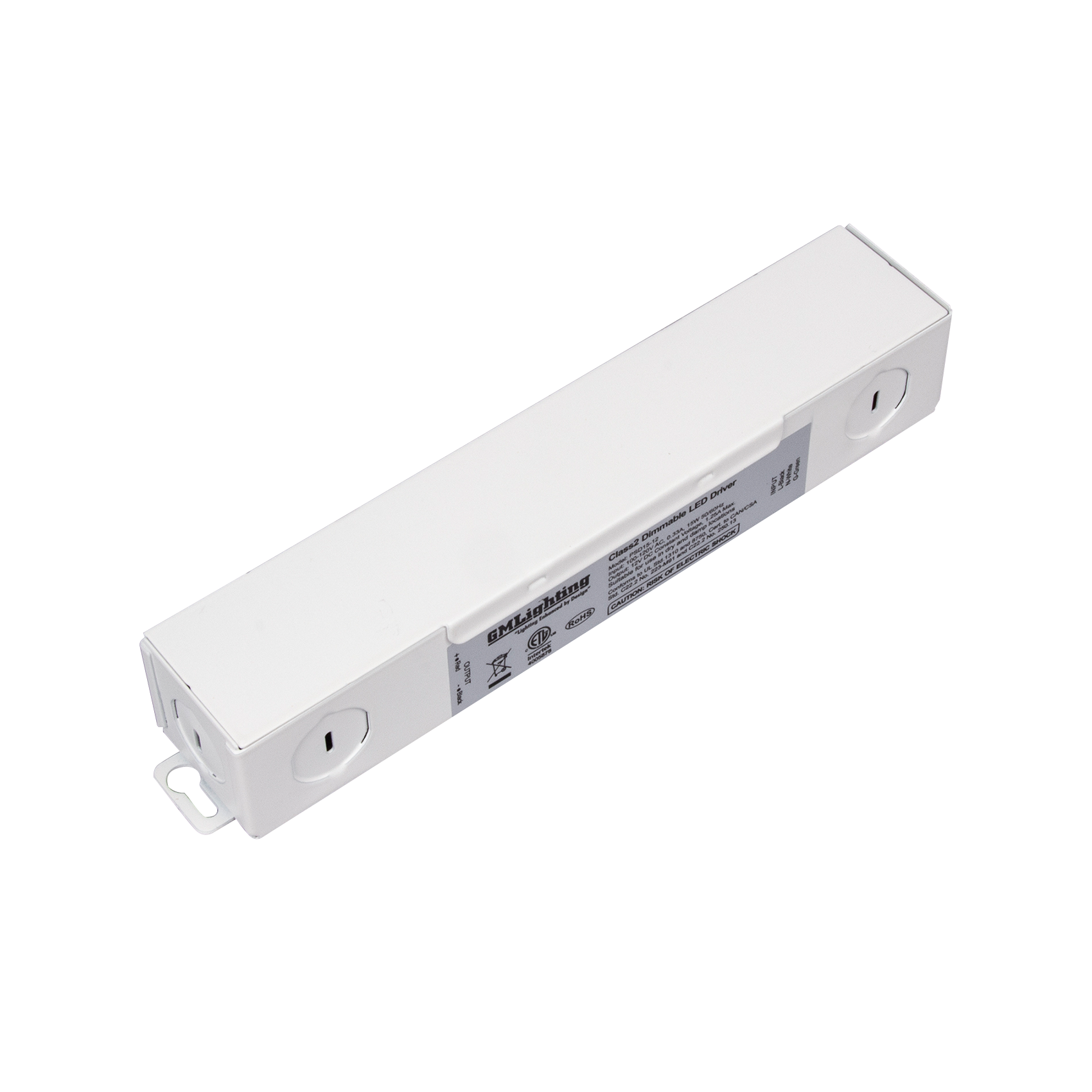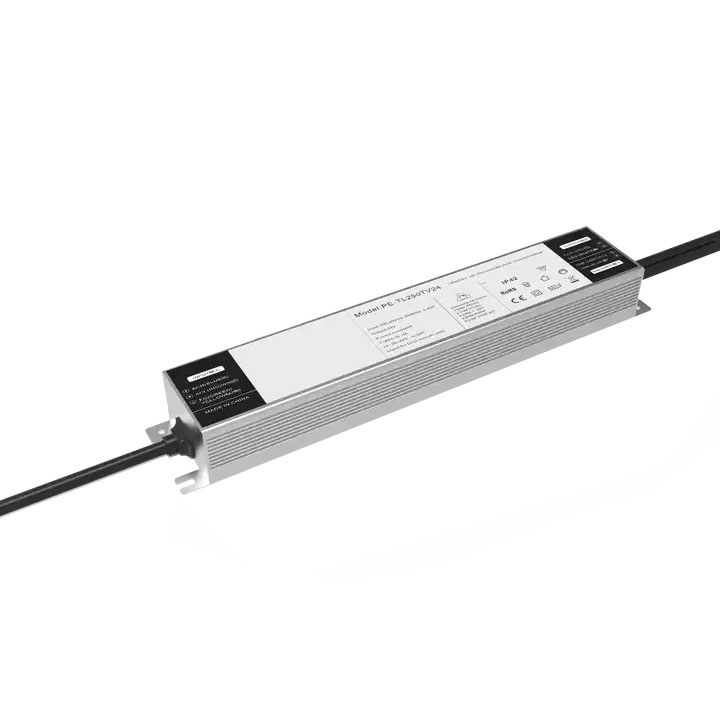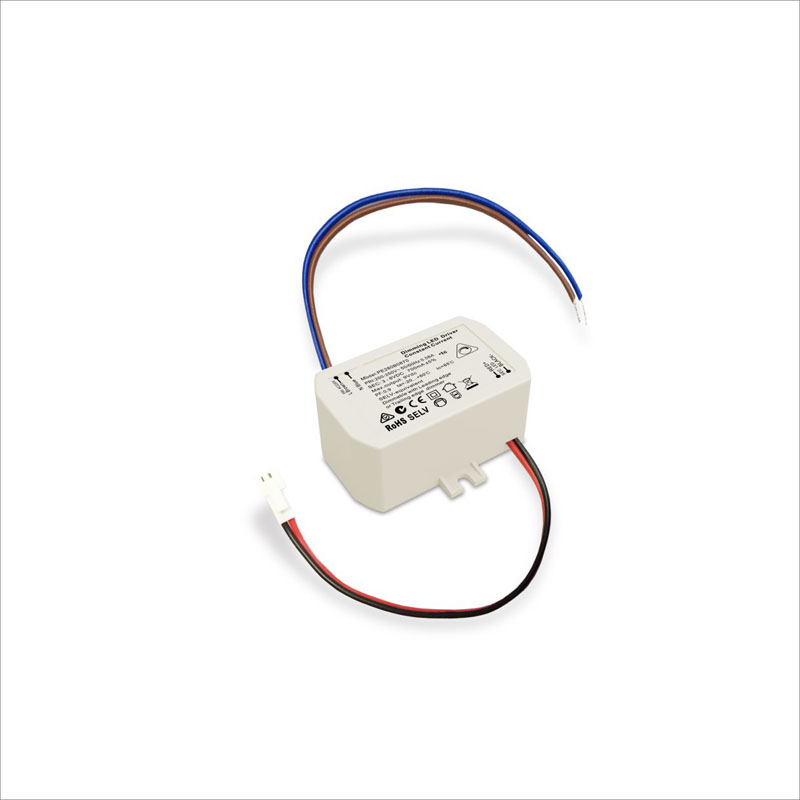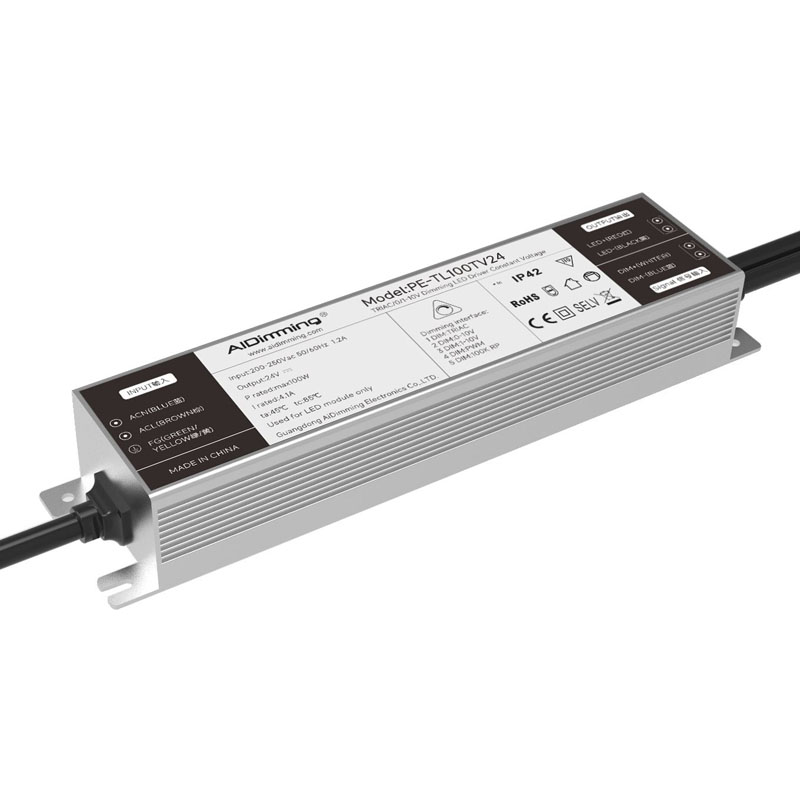Lighting plays a vital role in shaping our environment, influencing mood, productivity, and comfort. As technology advances, so do the options for controlling lighting to meet our personalized needs. Among these innovations, triac dimmable solutions stand out for their robustness and versatility, enabling seamless control over artificial light sources. From residential homes seeking warm, cozy atmospheres to commercial spaces demanding energy efficiency, triac dimmable systems facilitate a new level of lighting precision. This comprehensive guide explores everything about triac dimmable technology—its principles, components, applications, and future trends—empowering you to make informed choices for your lighting systems.
Triac dimmable setups are transforming how we interact with light. They combine advanced electronic components, sophisticated circuitry, and creative design to deliver lighting experiences that are both practical and aesthetically pleasing. Whether you’re upgrading your home’s lighting, installing new commercial fixtures, or exploring smart lighting solutions, understanding triac dimmable technologies helps unlock their full potential. In this article, we will delve into the core aspects of triac dimming technology, explore specific components like triac dimmable LED drivers, triac dimmable switches, and triac dimmable LED power supplies, and offer insights into future developments shaping this dynamic industry.
Understanding Triac Dimming Technology

Triac (Triode for Alternating Current) dimming technology revolutionized the way lighting is controlled by allowing smooth, flicker-free dimming directly from standard AC power supplies. This section covers what a triac dimmer is, how it works, its advantages, considerations for compatibility with various light sources, common challenges, troubleshooting, and the emerging trends that are enhancing its utility across different sectors.
Triac dimming is fundamentally based on phase-cutting techniques that modulate the delivered power to lighting fixtures. This chapter provides an in-depth exploration of the operating principles, the key benefits for end-users, and how ongoing innovations are ensuring more reliable, versatile, and energy-efficient lighting control.
What Is a Triac Dimmer and How Does It Work?

A triac dimmer acts as an electronic device integrated into a switch or control module that manages the voltage waveform supplied to a load, such as incandescent, LED, or halogen bulbs. The core component, the triac, functions as a switch that can be triggered at different points within each AC cycle, thereby controlling the amount of power delivered.
The operation of a triac dimmable system relies on phase control. When a user adjusts the dimming knob or interface, the triac is triggered earlier or later in each AC cycle, effectively “cutting” the phase of the waveform. This phase-cutting reduces the effective voltage reaching the lamp, dimming it gradually from full brightness to lower levels or complete off states.
A typical triac dimmer circuit includes a diac, a triac, a variable resistor (or potentiometer), and other passive components. The timing of the triac firing determines the light level. Modern triac dimmable switches incorporate microcontrollers or advanced semiconductor devices to improve flicker-free performance, compatibility, and user control.
The technology’s popularity stems from its simplicity and effectiveness with incandescent bulbs, which are excellent load types for phase control dimming. However, with advances in LED lighting, manufacturers have adapted triac dimmable drivers and switches to handle the electronics’ quirks for flicker-free operation, making triac dimmable systems more versatile than ever.
Advantages of Using Triac Dimmers in Residential and Commercial Settings

The deployment of triac dimmable lighting solutions delivers numerous benefits, making them highly desirable both in homes and in commercial buildings. Their advantages include ease of use, cost-effectiveness, compatibility with various lighting technologies, and energy efficiency.
First, triac dimmable systems provide intuitive control over lighting levels, allowing occupants or operators to adjust brightness immediately. This facilitates creating the perfect ambiance, whether it’s a cozy warm light setting or high brightness for tasks. The tactile feel of traditional rotary switches with dimming capability also enhances user experience, providing an intuitive and familiar interface.
Second, energy savings are significant, especially when triac dimmable switches are paired with energy-efficient LED lights. Dimming reduces power consumption substantially, prolongs the lifespan of lighting fixtures, and decreases utility bills. This is particularly impactful in commercial environments where lighting loads are substantial, offering quick returns on investment. When integrated with triac dimmable LED drivers and triac dimmable LED power supplies, the system operates efficiently across a wider range of light temperatures and design schemes.
Third, triac dimmable solutions enhance control over lighting scenes, contributing to the aesthetic and functional aspects of space management. For example, in hospitality, retail, and entertainment venues, adjustable lighting can adapt to evolving atmospheres swiftly. For homes, it enhances daily routines by providing layers of lighting options, from bright task lights to soft, comforting warm light.
Additionally, the robustness of triac dimming in handling high loads and its compatibility with most standard AC wiring make it a favorite choice for remodelling projects and new installations alike. Its simplicity reduces the complexity of installation and minimizes troubleshooting needs, further adding to its practicality and value.
Furthermore, triac dimmable systems are increasingly integrated into smart home ecosystems, allowing synchronization with voice assistants, timers, and automation platforms. This adaptability accelerates the transition toward more intelligent, energy-aware lighting paradigms.
Compatibility Considerations with Different Light Sources

Despite their advantages, triac dimmable setups are not universally compatible across all lighting sources. Recognizing and managing compatibility issues is essential to ensure reliable operation, optimal dimming range, and prevent flickering or damage.
Incandescent and halogen bulbs are naturally compatible with triac dimmable switches because these loads have resistive characteristics that align well with phase control dimming. However, with the advent of LED lighting, compatibility becomes more complex due to the electronic drivers inside LED fixtures, which are often sensitive to phase-cut signals.
Triac dimmable LED drivers and lamps must be specifically designed or certified for phase-cut dimming. Otherwise, they may flicker, buzz, or not dim to the desired levels. The key is to select triac dimmable LED drivers that support this technology, ensuring stable operation with a broad dimming range and flicker-free performance.
Another consideration involves the power rating and load type. Overloading or mismatched load ratings can lead to circuit issues, reduced lifespan, or safety hazards. It’s crucial to match the triac dimmable switch and driver with the total wattage and type of lighting fixtures used.
Finally, compatibility with dimming protocols varies. Some systems are designed for local manual control; others integrate with smart systems for remote management. By understanding the specific requirements and limitations, users can optimize their lighting setups and avoid unnecessary complications.
Common Challenges and Troubleshooting Tips

While triac dimmable systems are highly effective, they present certain challenges that can affect performance and longevity. Common issues include flickering, humming, limited dimming range, and incompatibility with non-standard fixtures.
Flickering is frequently caused by incompatible LED drivers or lamps that do not support triac dimming. To troubleshoot, verify the bulb or fixture’s specifications, swapping out non-compliant LED modules for certified triac dimmable versions. Ensuring that the triac dimmable switch and LED driver are compatible is critical for optimal performance.
Humming or buzzing sounds are often due to electromagnetic interference, poor grounding, or incompatible components. Installing ferrite beads, improving grounding, or upgrading to higher-quality switches and drivers can mitigate these issues.
Limited dimming range or abrupt flickering near minimum or maximum brightness usually indicates mismatched specifications or degraded components. Using precision triac dimmable LED drivers and switches, calibrated for the load, can offer smoother operation.
The triac components themselves can also degrade over time, especially if subjected to voltage surges, overloads, or electrical noise. Routine inspections, surge protection, and proper electrical wiring practices are vital preventative measures.
Emerging solutions like digital dimming and smart controls complement traditional triac dimming, tackling some inherent limitations and paving the way for more sophisticated, user-friendly lighting systems. The integration of these technologies requires compatibility checks but offers enhanced functionality and troubleshooting diagnostics.
Future Trends in Triac Dimming Technology

The landscape of triac dimming is rapidly evolving owing to advancements in electronics, miniaturization, and integration with smart systems. Future developments promise to extend the capabilities, efficiency, and reliability of dimming solutions.
One trend involves improved triac dimmable LED drivers that support broader load ranges, higher efficiency, and better flicker-free operation. Manufacturers are focusing on creating drivers that are more compatible with a variety of LED fixtures, including tunable white and color-changing LEDs, enabling richer lighting experiences.
The integration of triac dimmable switches with Internet of Things (IoT) platforms is also a significant trend. Smart dimmable switches that can be remotely controlled, scheduled, and customized via apps will become more prevalent. These systems will incorporate sensors, AI, and voice control to provide tailored lighting scenarios, energy consumption insights, and predictive maintenance.
Another exciting development involves the convergence of triac dimming with digital communication protocols such as DALI, Zigbee, or Z-Wave, enhancing multi-zone control, scene setting, and automation. While triac is traditionally analog, hybrid solutions that combine phase control with digital features are emerging, offering the best of both worlds.
High-quality triac dimmable switches and power supplies will continue to improve in noise reduction, longevity, and ease of installation, making dimming systems more accessible and reliable for everyday use.
Lastly, industry trends point toward sustainable and eco-friendly innovations. This includes designing triac dimmable components with reduced manufacturing footprints, recyclable materials, and better thermal management, aligning technological progress with environmental responsibility.
Triac Dimmable LED Drivers

In modern lighting systems, LED technology is at the forefront, offering unparalleled energy efficiency, longevity, and design flexibility. To harness these advantages fully, specialized components like triac dimmable LED drivers are crucial. They serve as the backbone of dimming capabilities, ensuring smooth operation, consistent performance, and integration with traditional dimming infrastructure. This section provides a detailed overview of what LED drivers do, key features to consider, installation guidelines, advantages in energy savings, and compatibility with various fixtures and color temperatures.
Definition and Function of LED Drivers in Dimmable Applications
An LED driver functions as a power supply and regulator for LED lighting fixtures. Unlike traditional incandescent bulbs that operate directly from AC mains, LEDs require a stable, controlled current to function correctly and safely. In triac dimmable systems, the driver must not only supply power but also respond to dimming signals to modulate brightness effectively.
Triac dimmable LED drivers decode the phase-cut signals from the dimmer switch and adjust their output accordingly. This capability ensures flicker-free dimming, smooth transitions, and consistent color temperature across brightness levels. They often incorporate built-in circuitry for compatibility with a broad range of dimmers, ensuring seamless integration into existing AC wiring.
The primary role of these drivers extends beyond simple power conversion. They stabilize the voltage and current, suppress electrical noise, and prevent power surges, thereby extending the lifespan of LEDs. They are engineered to work with dimmer systems that employ phase control, making them indispensable in triac dimmable lighting arrangements.
Furthermore, these drivers are designed to support various types of LEDs, including retrofit bulbs, integrated fixtures, strips, and panels. Their versatility makes them suitable for a broad spectrum of applications, from residential to commercial and industrial environments.
Features to Look for in a Triac Dimmable LED Driver
Choosing the right triac dimmable LED driver involves evaluating several critical features that ensure performance, compatibility, and reliability. The right driver not only enhances dimming quality but also maximizes energy savings and fixture lifespan.
A comprehensive triac dimmable LED driver should support a wide dimming range, ideally from full brightness down to very low levels without flickering or color shifting. A good driver should also exhibit low flicker tendencies, providing flicker-free operation that is comfortable for the eyes and suitable for environments where quality lighting is essential.
Current regulation accuracy is another vital feature. Precise current control minimizes lumen fluctuations and maintains consistent color temperature across brightness levels. Look for drivers that have certifications such as CE, UL, or DLC to guarantee safety and compliance with industry standards.
Thermal management features, including suitable heatsinks and thermal protection mechanisms, prolong driver life, especially under high-temperature operating conditions. Additionally, drivers with universal input voltage support (e.g., 100-277V AC) enhance versatility across different regions.
Dimmer compatibility is paramount. The driver should explicitly mention support for triac dimmers and specify the compatible dimmer brands or models. Integrated soft-start features can prevent sudden surges, improving safety and lifespan.
Lastly, consider the physical size and form factor of the driver, especially when retrofitting existing fixtures or designing custom lighting solutions. Compact, lightweight drivers facilitate easier installation, maintenance, and integration into diverse lighting setups.
Installation Guidelines for Optimal Performance
Proper installation is essential to ensure the longevity and performance of triac dimmable LED drivers. While the process may vary based on the specific model and application, some fundamental practices should be followed to maximize results.
Start by reading and adhering to the manufacturer’s instructions, paying close attention to wiring diagrams, voltage ratings, and load capacities. Accurate wiring—matching line, neutral, and load—prevents operational issues like flickering or driver failure. Use high-quality connectors and conduits to secure the connections and minimize electrical noise.
Avoid overloading; ensure that the combined wattage of all connected LEDs does not exceed the driver’s rated capacity. Maintaining appropriate thermal conditions—such as proper ventilation and avoiding thermal barriers—also prolongs driver lifespan. Mount drivers in well-ventilated areas, away from heat sources, to maintain optimal operating temperatures.
It’s also recommended to install surge protectors or circuit breakers to guard against voltage spikes that could damage sensitive electronics. When integrating triac dimmable LED drivers into existing dimmer circuits, verify compatibility multiple times, especially if retrofitting older systems designed for incandescent bulbs.
Commissioning the system involves testing the dimming range, flicker frequency, and overall responsiveness. Fine-tuning the dimmer settings or equalization via manufacturer-recommended adjustments can optimize performance. Routine maintenance, such as inspecting wiring and cleaning cooling elements, enhances long-term reliability.
Energy Efficiency and Longevity Benefits
The deployment of triac dimmable LED drivers is primarily driven by the considerable energy savings they facilitate. Dimming reduces power consumption by limiting the current supplied to LED fixtures, which directly translates into lower electricity bills, especially when scaled across multiple fixtures in commercial environments.
LED drivers also contribute to prolonging the lifespan of LED fixtures. By providing consistent, ripple-free power and protecting against voltage surges, they prevent premature component failure. In typical scenarios, triac dimmable drivers can double or even triple lamp lifespan compared to non-dimmable or poorly regulated solutions.
Furthermore, high-quality drivers incorporate features like thermal overload protection, which prevents overheating and damage. Reduced maintenance costs and fewer replacements are a direct outcome of utilizing durable, efficient triac dimmable drivers.
Beyond cost savings, environmental benefits include decreased carbon footprints by reducing energy consumption. For sustainability-conscious builders and homeowners, the combination of triac dimmable capabilities with LED technology represents a compelling choice for green, smart, and future-proof lighting environments.
Compatibility with Various LED Fixtures and Color Temperatures
One of the critical challenges in triac dimming systems is ensuring compatibility across a diverse range of LED fixtures and color temperatures. Manufacturers produce a variety of drivers designed to support different LED configurations, from warm white to cool white and tunable options.
Triac dimmable LED drivers must be capable of handling not just varying power loads but also different electrical characteristics presented by different fixture types. For example, retrofit LED bulbs often have integrated drivers optimized for phase control dimming, whereas dedicated LED panels or strip lights may require special driver modules or controllers.
Moreover, color temperature compatibility becomes pertinent when aiming for specific lighting effects. Warm light (around 2700K-3000K) enhances relaxation and intimacy, making triac dimmable warm light highly desirable in residential and hospitality settings. Cool or daylight temperatures (around 5000K-6500K) suit workspaces and retail environments demanding bright, alerting conditions.
A modern triac dimmable LED driver should support a broad spectrum of color temperatures and be capable of maintaining stable luminance and color rendering accuracy at various dimming levels. Also, check for compatibility with smart control systems if adaptive or scene-based lighting is part of the plan.
Having versatile drivers that support multiple fixture types and light temperatures simplifies design, installation, and maintenance processes while ensuring consistent performance across different applications. This adaptability makes triac dimmable LED drivers a linchpin in modern lighting solutions.
Triac Dimmable Switches

Triac dimmable switches are essential components that enable precise control over lighting brightness levels via phase control or other dimming techniques. They bridge the gap between user intentions and electronic response, offering a seamless user experience. This section sheds light on the types available, criteria for selection, best installation practices, smart integration, and ways to achieve stable dimming performance.
Types of Triac Dimmable Switches Available
The market offers a broad spectrum of triac dimmable switches tailored to various application needs, from simple rotary dimmers to sophisticated smart modules. Understanding the differences helps users select the most suitable option.
Traditional rotary or slider dimmers are among the most common, providing manual, tactile control over light levels. These are typically designed for residential use, offering an intuitive interface and straightforward operation. They are compatible with triac dimmable loads and provide reliable performance for incandescent and certain types of LED fixtures.
Modern electronic dimmer switches integrate microcontrollers and digital controls, enabling features like remote control, scene setting, and scheduled operation. Many come with triac dimmable compatibility built-in, allowing for flicker-free operation across a range of LED lighting fixtures.
Smart dimmable switches expand capabilities further by connecting to Wi-Fi or Zigbee networks. These can be integrated with automation systems or voice assistants. They often feature app controls, dimming curves customization, and energy monitoring, unlocking new levels of control and convenience.
Additionally, specialized triac dimmable switches for commercial or industrial environments may feature higher load capacities, robust construction, and compliance with safety standards suitable for demanding conditions.
Selection Criteria Based on Application and Load
Choosing the right triac dimmable switch hinges on understanding the specific requirements of the installation environment and the nature of the lighting load. Several key factors should influence the decision:
Load Capacity and Compatibility — Ensure the switch can handle the total wattage of connected fixtures and is compatible with the light source (incandescent, LED, halogen). Overloading can lead to flickering, reduced lifespan, or failure.
Type of Load — The nature of the load impacts compatibility. Resistive loads like incandescent bulbs work seamlessly with most dimmers, but LED fixtures may require drivers specifically rated for phase control dimming.
Dimming Range — Look for switches that offer a wide dimming range, from near-maximum brightness to very dim levels, without flicker or humming. The quality of dimming is often more critical than maximum brightness alone.
Control Features — Decide whether manual control suffices or if remote, smart controls, or voice commands are preferred. Integration capabilities with existing smart home or automation systems add flexibility.
Safety and Certifications — Prioritize switches that comply with regional safety standards such as UL, CE, or IEC. Features like overvoltage protection or insulated wiring enhance safety.
Physical Design — Select switches that fit the specific mounting requirements, wall box sizes, and aesthetic preferences to ensure a clean, professional installation.
Installation Best Practices for Safety and Reliability
Proper installation is vital to attain the full benefits of triac dimmable switches, including safety, durability, and optimal performance. An understanding of wiring, grounding, and control settings is essential.
Begin by turning off power at the circuit breaker to prevent electrical shock. Use a multimeter to verify the absence of voltage at the wires before proceeding. Carefully follow the manufacturer’s wiring diagram, ensuring line, load, neutral, and ground connections are correctly identified and wired.
Secure all connections using appropriate tools and connectors, avoiding loose or exposed wiring, which can cause intermittent operation or safety hazards. For switches that support multiple circuits or multi-gang configurations, double-check wiring labels and color codes.
Pay attention to wiring standards in your region, especially regarding neutral wires. Many LED-compatible dimmers require a neutral wire, so if not present, select models designed for no-neutral wiring.
Install the switch in a well-ventilated area, away from moisture and extreme temperatures. Use the proper wall-box size, and ensure the switch sits flush with the wall after mounting for both aesthetics and safety.
Once installed, toggle power back on and test the operation. Adjust dimmer settings, check for flickering or humming, and verify smooth dimming performance across the entire range. For smart switches, connect to the network and perform configuration as per instructions.
Routine inspection, cleaning of contacts, and adherence to electrical codes help sustain long-term reliability. For complex installations, consulting professional electricians will mitigate risks and optimize outcomes.
Integration with Smart Home Systems
Smart home integration elevates the functionality of triac dimmable switches, enabling remote control, automation, and scene creation for a truly intelligent lighting environment. This section explores how these switches connect with broader systems, the benefits of integration, and design considerations.
Most triac dimmable switches compatible with smart home systems connect via Wi-Fi, Zigbee, Z-Wave, or proprietary protocols. They can be controlled through mobile apps, voice commands, or automation routines, providing unmatched convenience and flexibility. For example, a voice assistant can dim the lights to a specified level or turn them off at scheduled times.
Integration also enables scene setting, where multiple lighting fixtures and controls are synchronized for specific moods or functions—creating perfect warm light settings for relaxation or bright cool light for productivity. Triac dimmable switches that support multiple zones enable zoning control, further enhancing ambiance customization.
Moreover, smart control enhances monitoring and maintenance. Energy consumption data, usage patterns, and fault detection inform maintenance and optimize operation. Energy-efficient lighting combined with automation reduces overall consumption and contributes to sustainability goals.
To ensure seamless integration, select switches that support the protocol of your chosen smart home ecosystem, verify firmware compatibility, and ensure reliable Wi-Fi or wireless connectivity. It’s also prudent to consider switches with updates and security features to protect against cyber threats.
Proper placement of smart switches involves ensuring signal strength and minimizing interference. For retrofit projects, confirm that existing wiring and dimming loads are compatible with smart modules, or consider upgrading to fixtures designed for smart controls.
Ensuring Seamless Dimming Performance
Achieving consistent and noise-free dimming with triac dimmable switches depends on a combination of quality components, correct installation, and user practices. Dimming performance can be affected by load type, wiring, environmental factors, and device settings.
Choose high-quality triac switches specifically rated for LED loads, and pair them with triac dimmable drivers and fixtures designed for such operation. Verify the compatibility matrix provided by manufacturers and select reputable brands to minimize issues.
Proper wiring and installation are critical. Avoid long cable runs that can introduce electrical noise, and ensure proper grounding and shielding to reduce interference. If humming or flickering occurs, try replacing the dimmer switch or adjusting dimming parameters; some switches offer calibration or soft-start features that improve the experience.
Environmental factors such as temperature fluctuations, power surges, and electrical noise can impact performance. Installing surge protectors and verifying stable power supplies mitigate these issues. Regular maintenance, including cleaning contacts and inspecting wiring integrity, prolongs device lifespan.
In environments with multiple dimmers or complex circuits, optimize wiring layout to prevent interference. Additionally, testing a few fixtures at different dimming levels and adjusting settings before full deployment can reveal potential issues early. Consulting with professionals for complex installations ensures that the system performs reliably over time.
Dimming Warm Light with Triac Technology

Warm light creates a cozy, inviting atmosphere ideal for residential, hospitality, and relaxation environments. When combined with triac dimming technology, warm light can be dynamically adjusted to match mood, task requirements, and aesthetic preferences. This segment explores the characteristics, how triac dimming enhances warm light effects, suitable applications, adjustment techniques, and tips for natural, comfortable dimming.
Characteristics of Warm Light and Its Impact on Ambiance
Warm light typically ranges from 2700K to 3000K in color temperature, mimicking the glow of incandescent bulbs or candlelight. This light spectrum emphasizes red and yellow wavelengths, producing a soft, inviting glow that promotes relaxation, intimacy, and comfort.
The impact of warm light on ambiance is profound. It softens harsh shadows and highlights, reduces glare, and encourages a sense of calm. Its use in living rooms, bedrooms, restaurants, and hospitality areas enhances social interactions and contributes to a soothing environment.
Color rendering index (CRI) is crucial when working with warm light. A high CRI (>90) ensures that colors appear natural and vibrant under warm illumination. When paired with triac dimmable setups, high-CRI warm lights enable smooth transitions without color shifts or flickering, maintaining aesthetics at all brightness levels.
Warm light also influences mood and perceptual comfort. Dimming from full brightness to lower levels invites relaxation and can prevent fatigue during long periods of reading or leisure. This effectiveness underscores the importance of incorporating dimmable warm light solutions into thoughtfully designed spaces.
How Triac Dimming Enhances Warm Light Effect
Triac dimmable technology excels at enhancing warm light effects due to its ability to provide flicker-free, instant, and silent dimming. When properly configured, triac dimming allows users to adjust warm light intensity seamlessly, creating individualized atmospheres easily.
The phase-control mechanism of triac dimming smoothly modulates the power delivered to LED or incandescent fixtures, enabling gradual brightness changes. This precision avoids flicker or color shifting often associated with inferior dimming methods, ensuring the warmth and softness of the light are maintained at every lumen level.
In practical terms, users can dim warm light to the optimal level for relaxation, meditation, or intimate gatherings, then brighten for reading or activity. The ability to customize light levels dynamically enhances user control and elevates overall ambiance.
In hospitality or retail environments, triac dimming helps in staging visual narratives. For example, at a restaurant, warm lighting can be subtly dimmed during a romantic dinner or increased for breakfast service without technical hassle. This flexibility adds complexity and sophistication to space management.
Triac dimmable fixtures and drivers designed for warm light ensure that the dimming curve is compatible with the aesthetic intent, avoiding unnatural color shifts or flickering that can detract from the desired atmosphere.
Adjusting Brightness Levels for Comfort and Aesthetics
Achieving the right brightness level for warm light involves balancing functional needs and aesthetic preferences. Overly bright warm light can be stark, while too dim might create an unsafe environment or reduce visibility.
The first step is defining the purpose of the space and user preferences. For cozy settings like a living room or bedroom, lower brightness levels—around 10-30%—often suffice. For tasks such as reading or cooking, brighter settings—50-75%—are preferable, with seamless triac dim transitions.
Using triac dimmable switches, users can fine-tune lighting to meet various scenarios. The key is to ensure the dimming device and fixtures are calibrated to prevent flickering or uneven dimming, especially in LED setups.
Additionally, layering lighting sources—such as combining warm ceiling lights with wall sconces or table lamps—can create depth and interest. Dimming these layers independently enables dynamic control over the room’s ambiance, accentuating the aesthetic appeal.
From a design perspective, incorporating dimmable warm light points allows for flexible atmospheres that can switch from vibrant and energetic during daytime activities to tranquil and cozy at night. The capacity for real-time adjustment lends an air of intimacy and personalization to environments.
Recommendations for Achieving Natural Warm Light Dimming
To realize smooth, natural warm light dimming, several best practices can be followed:
- Use high-quality triac dimmable LED drivers and switches rated for low-voltage or high-CRI warm light fixtures to prevent color shifts or flickering.
- Select fixtures with a wide dimming range, ensuring that the transition from full to low brightness appears gradual and natural, avoiding abrupt jumps.
- Adjust dimmer settings to match the fixture’s dimming curve; some fixtures respond differently depending on the dimmer’s configuration. Calibration or trial runs can fine-tune the experience.
- Consider using dimming algorithms or curves provided by the manufacturer that are optimized for warm light LED sources. These algorithms refine the phase-cutting process, ensuring a more natural dimming transition.
- Employ dimmer bypass modules or filters if flickering persists. Filters help stabilize the electrical signal, especially with sensitive LED fixtures.
- Avoid excessive dimming below certain thresholds if flickering or color shifting occurs. Instead, supplement with other layers of illumination or adjust the fixture’s temperature to achieve the desired ambiance.
By focusing on high-quality components, proper calibration, and thoughtful design, triac dimming can produce a warm, inviting glow that is both functional and aesthetically pleasing, transforming spaces into havens of relaxation and comfort.
Triac Dimmable LED Power Supplies

LED lighting heavily relies on dedicated power supplies capable of delivering stable, controlled voltage and current. When integrating triac dimmable systems, the quality and compatibility of LED power supplies directly influence overall performance, efficiency, and lifespan of the lighting setup. This section explicates the role and importance of LED power supplies, key specifications, how to select the appropriate unit, installation tips, and maintenance considerations.
Role and Importance of LED Power Supplies in Dimming Circuits
An LED power supply converts high-voltage AC into the low-voltage, stabilized current required by LED fixtures. In triac dimmable applications, the power supply must handle phase control signals from the dimmer, translating these into modulated power output that aligns with the circuit’s dimming requirements.
The significance of a triac dimmable LED power supply can’t be overstated. It acts as the interface between the voltage waveform controlled by the triac switch and the LED fixtures. A high-quality power supply ensures flicker-free dimming, consistent brightness, and reliable operation across all dimming levels.
Moreover, the power supply’s efficiency determines how much energy is lost during conversion, influencing overall system efficiency and heat generation. An efficient, well-designed power supply prolongs the lifespan of both the driver and the LED fixtures, reducing maintenance costs and operational interruptions.
Finally, the right power supply contributes to system safety, providing protections against overloads, short circuits, and surges. Its ability to support dimming functions across a broad range of temperatures and environments makes it a cornerstone component in advanced lighting control systems.
Key Specifications: Wattage, Voltage, and Dimming Compatibility
Understanding core specifications helps in choosing a triac dimmable LED power supply capable of meeting your project needs. The key metrics to evaluate include wattage capacity, input voltage range, output voltage and current, dimming capabilities, and certifications.
Wattage capacity must match or exceed the total load of the fixtures to avoid overloads. It’s prudent to select a power supply with a slightly higher rating than your current load to account for future expansion or transient surges. For multi-fixture systems, calculate total wattage accurately to prevent underpowering.
Input voltage compatibility ensures the power supply functions correctly within your region’s grid (e.g., 110V or 220V). Some models support universal input voltages, simplifying international deployment.
Output voltage and current are critical. For example, constant-current supplies are preferable in many LED applications, especially with strips or modules that require specific voltage levels. The output must align with the LED fixtures’ requirements for optimal performance.
Dimming compatibility specifies support for triac dimmer signals, often indicated as compatible with phase-cut dimming or trailing/leading edge controls. Quality power supplies specify the dimming range, flicker-free operation at low levels, and the response time, which affects user experience.
Certifications (UL, CE, RoHS) and safety standards provide assurance of compliance and safe operation. Consider also features like thermal protection, overload protection, and power factor correction for comprehensive performance and safety.
Selecting the Right Power Supply for Dimmable LED Installations
Selecting an appropriate triac dimmable LED power supply involves matching technical specifications with fixture requirements and environmental considerations. The process includes assessing load requirements, compatibility, installation constraints, and future scalability.
Start by calculating the total wattage of your LED fixtures, adding a margin (around 20%) to select a power supply with sufficient capacity. Verify the input voltage range fits your electrical system.
Next, confirm the power supply’s dimming support. Not all LED drivers or power supplies are compatible with triac phase dimming; choosing one explicitly rated for these controls ensures flicker-free operation. Look for advanced compatibility with popular dimmer brands and models.
Consider the physical size and installation environment. If space is limited, opt for compact, modular units designed for easy mounting into panels, enclosures, or directly onto fixtures. Environmental ratings such as IP (Ingress Protection) are vital if the power supply will operate in damp or outdoor locations.
Evaluate the service life and warranties. A good power supply should last over 50,000 hours of operation, minimizing replacements and service interruptions. Also, check reviews and feedback from other users regarding reliability and performance.
Lastly, plan for any potential future upgrades or expansions. Modular or scalable power solutions facilitate easy adjustments without significant rewiring efforts.
Installation and Safety Precautions
Proper installation of triac dimmable LED power supplies is critical for safe operation, optimal performance, and longevity. Adhering to best practices ensures compliance with electrical codes and prevents hazards.
Always begin by turning off the main power supply, verifying the absence of voltage before working on the circuit. Use high-quality tools, insulated wires, and connectors to ensure safety.
Follow the manufacturer’s installation instructions meticulously. Ensure correct wiring: line, neutral, ground, and output connections are properly identified and secured. Use appropriately rated breakers, fuses, or circuit protection devices to prevent overloads and short circuits.
Proper ventilation and thermal management strategies are essential. Install power supplies in well-ventilated areas, avoiding confined spaces that could lead to overheating. Mounting on heat sinks or insulated enclosures can improve cooling efficiency.
When connecting dimming signals, ensure that the power supply and dimmer switch are compatible and that the wiring setup is correctly balanced. Avoid long wire runs that could introduce noise or voltage drops, hampering dimming performance.
Conduct thorough testing after installation. Check for flickering, noise, overheating, or abnormal sounds. Fine-tune dimming levels as per manufacturer guidance to ensure flicker-free operation at all brightness settings.
Maintain regular inspections, especially in outdoor or high-humidity environments. Clean the power supply surfaces periodically, and replace any damaged wiring or components promptly. By exercising diligence in installation and maintenance, users can maximize efficiency, safety, and lifespan of their triac dimmable power supplies.
Maintenance and Troubleshooting of Dimmable Power Supplies
Maintaining triac dimmable LED power supplies ensures sustained operational excellence, safety, and cost savings. While these components are designed for reliability, occasional issues may arise, necessitating troubleshooting.
In case of flickering or inconsistent light output, verify the wiring integrity and confirm compatibility between the power supply, driver, and dimmer. Reassess the load matching, replacing or upgrading components if mismatched.
Overheating or hot spots indicate inadequate ventilation or overload conditions. Improving airflow, relocating the unit, or reducing the load can resolve these issues. Use thermal imaging or alarms to identify excess heat.
Electrical surges or voltage spikes can damage the power supply over time. Installing surge protectors and ensuring proper grounding prevents such failures. Corrosion, dust, or dirt on connectors can impede performance; regular cleaning preserves electrical contact quality.
If troubleshooting does not resolve issues, consult the manufacturer’s technical support or engage professional electricians. Replacing a faulty power supply with an OEM-certified alternative preserves system integrity and safety.
Perform periodic inspections, especially in environments with fluctuating energy quality. Maintaining documentation of installation settings, load calculations, and maintenance routines facilitates troubleshooting and future upgrades.
Conclusion

The evolution of triac dimmable lighting solutions signifies a leap forward in creating customizable, energy-efficient, and aesthetically pleasing environments. From the core components like triac dimmable switches, triac dimmable LED drivers, and triac dimmable LED power supplies to applications involving triac dimmable warm light, each element plays a pivotal role in delivering superior lighting experiences. As technology advances, integration with smart systems and innovations in driver design will continue to enhance performance, reliability, and user control. Embracing these triac dimmable solutions results in adaptable, elegant lighting setups—perfectly aligned with the demands of modern living and working spaces, and paving the way for a more sustainable future in lighting control.
Don’t have a business email? Click here!




